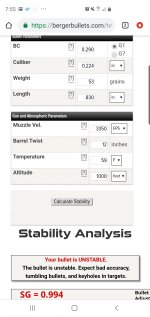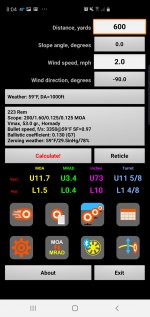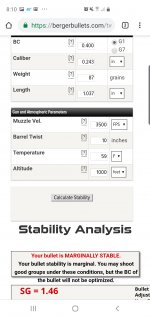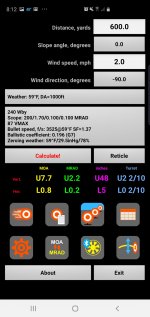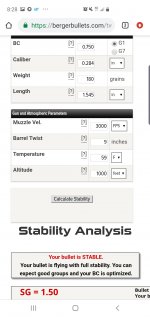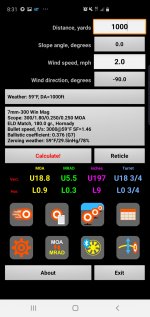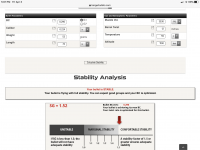remingtonman_25_06
Handloader
- Nov 17, 2005
- 2,918
- 727
Been playing with the stability calculator and from what I understand you want to be at 1.5 for optimal performance. 1-1.49 is considered marginally stable and anything less than 1 supposedly keyholes. So let's get down to the numbers. Say a guy has a 223 with a 12 twist. Theoretically should stabilize up to the 60g vmax and the like with no issues. My bullet of choice is the 53g VMAX at 3350fps. Recommended minimum twist rate is 12" The stability factor is .99 So with that said it still shoots nice 5 shot 1/2 MOA groups at 100 yards. So that got me thinking that's a long ways off the 1.5 recommend. So I put the 50g vmax in at 3450fps and again the stability factor is only a 1.15 Again these shoot 1/2 MOA 5shot groups at 100 yards. So my question is how do you even achieve a 1.5 stability factor in a 223 with varmint weight bullets and a varmint twist rate? I even put the little 40g VMAX in at 3800fps and its showing a 1.34 stability factor. Still a ways off the recommend 1.5 and that's a 40g bullet from a 12 twist at 3800fps...why are these still all shooting 1/2 MOA with ease at 100 yards if they're marginally stable at best? What am I missing?

